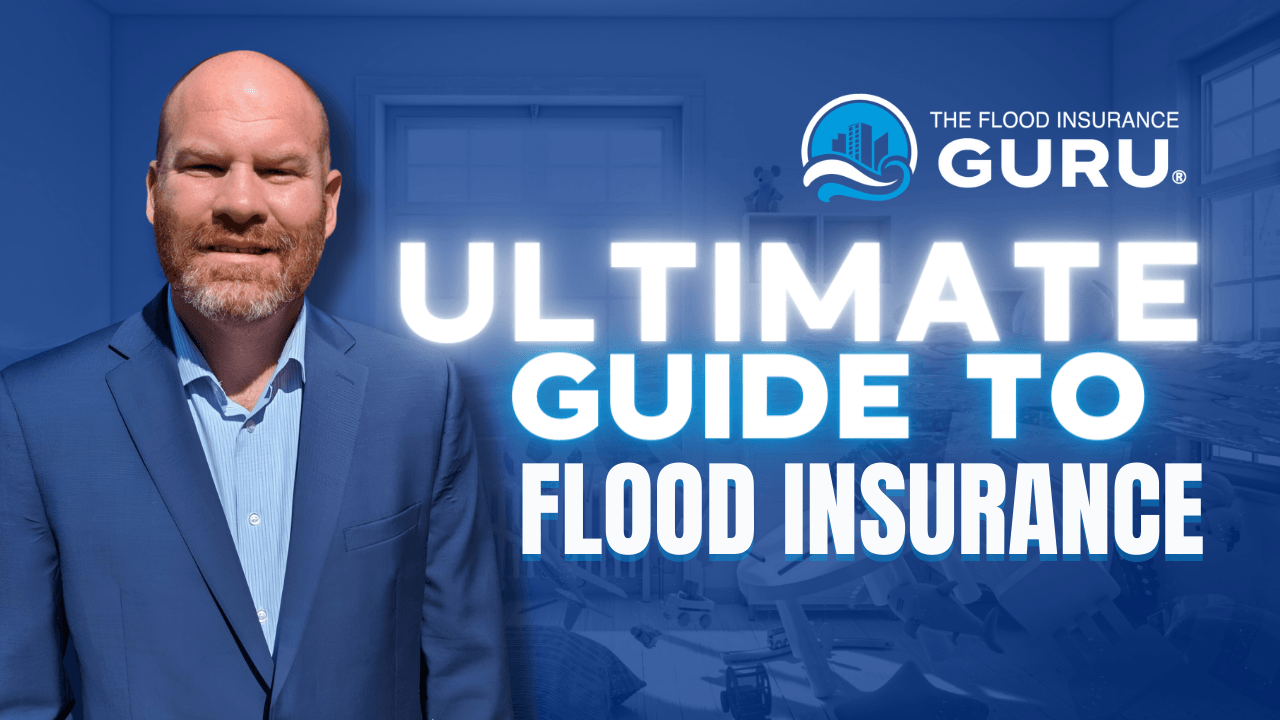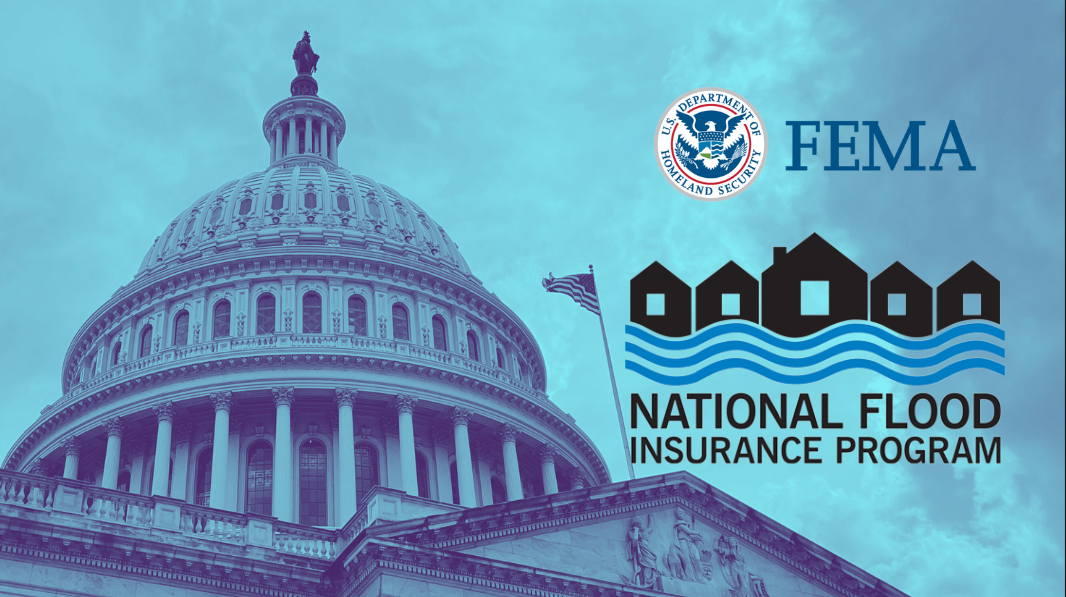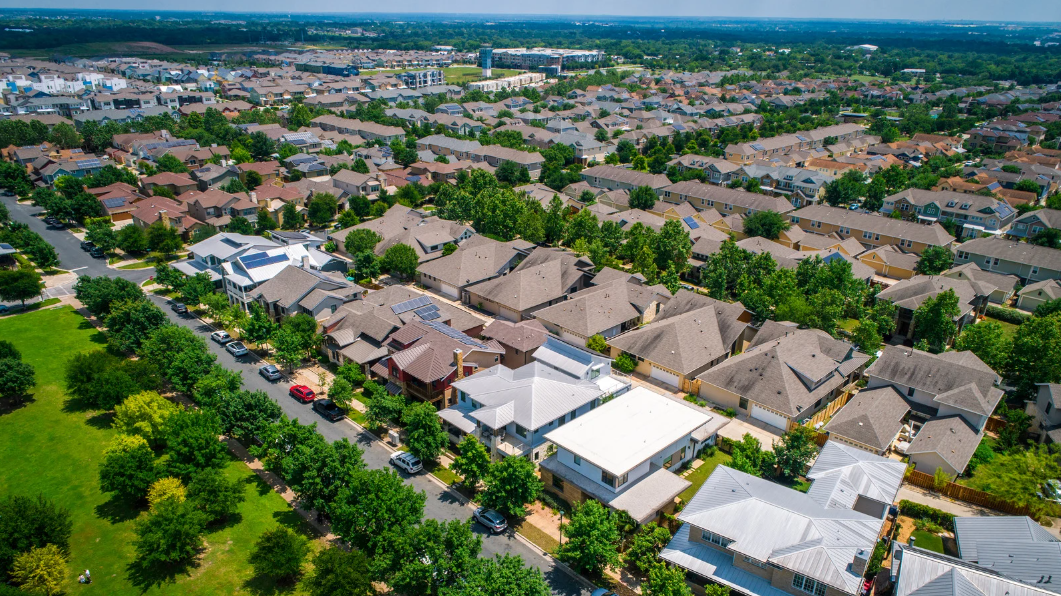
The Ultimate Guide to Flood Insurance: NFIP, Private, and How to Protect Your Home
Hey there, homeowner! It's Chris Greene, your Flood Insurance Guru, here to navigate you through understanding flood insurance. When I bought a home in a flood zone more than 12 years I had many questions that no one could answer.
Hopefully today I can answer some questions you might have about flood insurance. Whether you're a seasoned homeowner, a new buyer, or a business owner, understanding flood insurance is crucial in protecting your property and peace of mind.
Let's dive into the essentials of flood insurance, the National Flood Insurance Program (NFIP), private flood insurance, flood zones, flood maps, and what flood risk really means for you.
Home Insurance: Why Flood Insurance is a Must-Have
Flooding is the most frequent and pervasive natural disaster in the U.S., touching every state and territory. It's not just about living near the coast or a river; floods can happen anywhere, often where you least expect them.
That's why flood insurance isn't just a good idea—it's an essential layer of protection for your property. It's also typically not covered by most home insurance companies. It's actually why the National Flood Insurance Program (NFIP) was created in 1968. If you are still unsure about whether you need flood insurance, take a look at our "Why You Need Flood Insurance?" blog.

Navigating Flood Zones and Flood Maps
Understanding your property's flood risk starts with getting to know flood zones and flood maps. FEMA crafts these maps to show different levels of flood risk. Whether you're in a high-risk zone (Special Flood Hazard Area or SFHA) or a lower-risk area, knowing your zone is key to choosing the right flood insurance coverage. It's all about making informed decisions to protect your property.
These zones will determine if a mortgage company requires flood insurance, but one thing these zones will not determine is flood insurance pricing. As of 2021, FEMA no longer uses flood zones to determine their flood insurance rates.
It is also important to know these zones are really just used from a regulatory standpoint and do not give a full picture of the actual risk.
If you need help understanding how to read flood zones and maps, you can visit our blog dedicated to understanding flood zones.
What is Flood Risk?
Flood risk is like the weather forecast for your property's chance of experiencing a flood. It's based on factors like location, elevation, and changes in the environment. Recognizing your flood risk is crucial because it affects not only your insurance needs but also how you prepare for and manage potential flooding.
This gives you a full picture of the chances of a property flooding over a longer period. This might be over the course of 20 or 30 years as land becomes developed. You can get the flood risk score on your property by using our flood risk tool.
As your Flood Insurance Guru, I'm here to help you understand your options, assess your risk, and make the best choices for your flood insurance needs. Remember, every property has some level of flood risk, and being prepared is your best defense.
Flood insurance might seem complex, but together, we can navigate it. Whether you're assessing your risk, choosing between NFIP and private flood insurance, or just trying to understand flood zones, I'm here to guide you every step of the way. For more information on flood risks, check out our blog on flood risks and flood risk scores
Cost of Flood Insurance and flood insurance pricing
Flood insurance pricing is determined by several key factors. Firstly, within the National Flood Insurance Program (NFIP), flood zones are no longer the sole basis for rates, especially for investment properties. Instead, factors such as the replacement cost of the building, flooding frequency, type of flooding, and elevation above the base flood elevation are considered. Additionally, a property's claims history can impact rates under the federal program.
On the private side, flood zones are still relevant, but pricing also involves factors like flood risk scores, which assess the property's proximity to water and overall flood risk. These scores provide information on estimated premiums, flood zone classification, and whether flood insurance is required. By understanding these pricing mechanisms, homeowners can make informed decisions about their flood insurance coverage, whether through the NFIP or private insurers. For further information regarding pricing, you can visit our flood insurance pricing page.

National flood insurance program (nfip)
The NFIP is the federal flood insurance program supported by FEMA. It was established to help property owners protect themselves financially from floods. It's a program that offers flood insurance to homeowners, renters, and business owners if their community participates in the NFIP. The deal with NFIP policies is that they come with certain coverage limits and requirements, but they're a solid base of protection.
The good news is that NFIP wants to save you time on the journey to get flood insurance. It's why all pricing is the same with the federal flood insurance program as long as the coverages are the same. The only exception might be if you are buying a house and taking over someone else's policy. This was how I was able to turn a $3000 rate into a $300 rate more than 12 years ago. We also have an entire podcast episode that breaks down the pros and cons of NFIP insurance.
Private Flood Insurance
NFIP is not the only flood insurance option available in 2024, as private flood insurance has become a popular alternative in the last 10 years. This option is provided by private companies and can sometimes offer more flexibility in coverage and potentially higher limits than NFIP policies. If you're looking for coverage that goes beyond what the NFIP offers, or if you're eyeing quicker policy implementation, private flood insurance might be your ticket.
Unlike the National Flood Insurance Program (NFIP) each private company could have its own pricing so if you are getting flood insurance quotes make sure to get three different private flood insurance options. For a further explanation of private insurance and what it entails, check out our podcast episode designed to help you understand the ins and out.
.png?width=1280&height=720&name=The%20Flood%20Insurance%20Guru%20Learning%20Center%20-%20%20(16).png)
Write-your-own vs. nfip direct
Write Your Own (WYO) carriers are insurance companies that offer flood insurance policies directly to people, under rules set by FEMA. They handle everything from setting up the policy to dealing with claims, and they have to keep the money they get for flood insurance separate from their other funds. The WYO program started in 1983 with a few goals: to get more people to buy flood insurance, to make the process better for those who do, and to give insurance companies a chance to learn more about flood insurance.
NFIP Direct is a bit different. It lets agents sell flood insurance directly from the National Flood Insurance Program without going through a WYO carrier. This can make things like paying for the policy, handling claims, and getting the policy started easier. But, if someone doesn't know much about flood insurance, they might find NFIP Direct hard to use. This can make some agents hesitant to sell as much flood insurance through NFIP Direct as they would with a WYO carrier.
In short, whether you choose a WYO carrier or NFIP Direct, the cost and how claims are handled should be the same. The main difference might be in how easy and comfortable it is to communicate with WYO carriers. Agents might prefer WYO carriers because they can earn more in commissions and get more support and training. The most important thing, though, is just to have flood insurance, especially since fewer people have been buying it while more are making claims. For further information regarding WYO carriers, check out our blog breaking it down.
Flood insurance coverages
It is vital to understand different coverage types In flood insurance, building coverage typically refers to protection for the physical structure of your home, including its foundation, walls, floors, and built-in appliances like HVAC systems and water heaters. This coverage helps pay for repair or rebuilding costs in the event of flood damage to the structure itself.
Content coverage, on the other hand, extends protection to your personal belongings inside the home, such as furniture, clothing, electronics, and appliances. This ensures that if your possessions are damaged or destroyed by floodwaters, you can receive compensation to replace them.
Additionally, flood insurance may include coverage for additional living expenses (ALE), which can help cover costs incurred if you're forced to temporarily relocate while your home is being repaired or rebuilt due to flood damage. This could include expenses like temporary housing, food, and transportation, providing vital financial support during a challenging time.
Elevation Certificates
Elevation certificates are basically a survey of where a structure sits compared to different flood levels. It shows different elevation numbers of a property in relation to the base flood elevation. Base flood elevation is the level FEMA has set for potential flooding in certain areas. The elevation certificate will usually list the elevation of the floors, attached structures, different grades of property, and even machinary. Elevation certificates were required for flood insurance for a long time but in 2021 the national flood insurance program remeoved their requirement in most situations. They can still help with pricing when they are available. They can even help get a flood zone changed.
Flood insurance for homeowners
Homeowners need to understand that standard homeowners' insurance policies typically do not cover flood damage, necessitating the purchase of separate flood insurance. This why you will typically see different escor amoun ts for insurance on the mortgage statement if you are required to purchase it. Flood insurance policies come in two main types: those backed by the National Flood Insurance Program (NFIP) and private flood insurance offered by private insurers. NFIP policies cover damage to both the structure of the home and personal belongings, while private flood insurance may offer additional options and coverage levels. It's essential for homeowners to assess their flood risk based on FEMA flood maps and consider factors such as coverage limits, costs, and mandatory requirements, especially in high-risk flood areas. Additionally, homeowners should be aware of the need for separate policies for flood insurance and the importance of understanding coverage details, filing claims, and preparing for the unexpected financial burdens of flood events. Check out our Home Insurance vs. Flood Insurance blog.
Flood Insurance for mobile homeowners
.png?width=1280&height=720&name=Untitled%20design%20(2).png)
How does flood insurance come into play for mobile homeowners? Mobile homeowners need to be aware that standard homeowners' insurance policies typically do not cover flood damage. Therefore, they should consider purchasing separate flood insurance to protect their mobile homes and belongings. This coverage can be obtained through the National Flood Insurance Program (NFIP) or private insurers. It's important for mobile homeowners to assess their flood risk based on factors like location and elevation and ensure they have adequate coverage to safeguard their homes against the financial impact of flooding.
flood insurance for real estate investors

Real estate investors need flood insurance to protect their investment properties from the financial devastation caused by floods. Unlike standard homeowners' insurance policies, flood insurance provides coverage specifically for flood-related damage to buildings and contents.
This protection is crucial for investors who may own properties in flood-prone areas, as floods can lead to costly repairs and loss of rental income. Having flood insurance can also play a big role on the impact of profit per door for real estate investment properties. Additionally, having flood insurance can mitigate the risk of financial losses and help investors safeguard their assets against the unpredictable nature of flood events. Check out some tips for real estate investors in high risk flood zones
Commercial flood insurance
Commercial flood insurance provides essential coverage for businesses, protecting them from the financial impact of flood-related damage to their properties and assets. Unlike standard commercial property insurance, flood insurance specifically covers damage caused by floods, including structural damage and loss of inventory or equipment. This coverage is crucial for businesses located in flood-prone areas, as floods can disrupt operations and lead to significant financial losses. Commercial flood insurance policies may be obtained through the National Flood Insurance Program (NFIP) or private insurers, offering tailored solutions to meet the unique needs of businesses. Overall, commercial flood insurance is a vital risk management tool that helps businesses mitigate the impact of floods on their operations and finances.
Flood insurance wait periods
Waiting periods in flood insurance refer to the time between purchasing a policy and when coverage becomes effective. For most standard flood insurance policies, there is typically a 30-day waiting period before coverage begins. This means that once a policy is purchased, there is a waiting period before it becomes active, during which any flood damage that occurs is not covered. Remember when i was buying a home in a flood zone many years ago and was unaware of the different wait periods at the time. Thankfully because i was doing a loan closing there was no wait period. This rulle still applies today for most flood insurance for loan closings.
Waiting periods are designed to prevent individuals from purchasing coverage at the last minute when a flood is imminent, ensuring the stability of the insurance system. However, there are some exceptions to the waiting period rule, such as when flood insurance is required for a mortgage closing or when a property is newly designated as being in a high-risk flood zone. It's essential for property owners to understand and plan for waiting periods when purchasing flood insurance to ensure they have adequate coverage when they need it most.
Flood insurance payment options

Navigating the payments for flood insurance can be tricky especially if you are use to homeowners insurance. In most situations you can pay homeowners insurance monthly if you want. Maybe you want to cancel your home insurance because you found a better option, no problem right? However with flood insurance things work differently generally flood insurance has to be paid in full. This is the case whether you are paying it or a mortgage company is paying it. In many situations a mortgage company might make you pay it before closing. When I was buying a house in a flood zone that full payment was a big deal. When i thought I was going to have to pay $3000 upfront it caused a slight heart attack. By knowing my way around flood insurance and getting the premiums down to $300 it made things much easier for the closing. Flood insurancw cancel also work differently if you want to cancel because FEMA has vert strict rules about cancellations. Otherwise, a standard 30-day wait period applies. In the private market, wait periods can vary, ranging from 15 days to as short as 5 or 10 days, depending on the insurer.
Topics:


